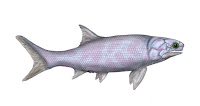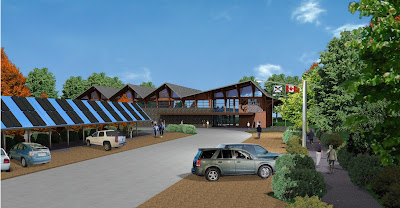The First Land Animals - Footprints in the Stone
(Photo credit: Gerald MacKenzie)
Earliest Carboniferous tetrapod tracks from Blue Beach (Nova Scotia, Canada) are found on more than 80 stratigraphic levels within the deposit. These 'track-bearing' layers of sandstone/siltstone/shale are exposed along several kms of shoreline, and are constantly revealed by the erosive force of twice-daily tides in the Bay of Fundy.
(Photo credit: Christopher Mansky)
The phenomenal abundance of footprints retrieved to date from the Blue Beach site have surprised the paleontological community, as it numbers over 2500 slabs, more than known for any other Carboniferous track-site. The well-known collections from the later Carboniferous of Pennsylvania and Alabama are the next-most extensive in size, numbering about 500, and 600 slabs, respectively.
(Photo credit: Christopher Mansky)
"I would very much like to add my support for funding and upgrading the Blue Beach Museum in Nova Scotia. This is one of the most important sites for the discovery of vertebrate fossils in early Carboniferous (Mississippian) rocks. There are very few regions of the world in which fossils of the earliest land vertebrates (tetrapods: the first members of the group to which humans, along with other mammals, birds and reptiles ultimately derive) can be found."
--- Dr. Jennifer Clack ScD FRS, Cambridge University, United Kingdom
WANT TO GET INVOLVED?
(photo credit: Christopher Mansky)
Most of the footprints are preserved as 'undertracks', meaning they are from 'lower levels' than the ones' traversed by these creatures. Very few finds represent the 'actual track level' of the trace-maker, so most of the footprints display incomplete footmarks at best, and may be difficult to recognize until one becomes accustomed to the peculiarities of track preservation. Todays' example is an undertrack from one of the better layers, and shows nearly-complete foot morphology.
(Photo credit: Christopher Mansky)
The phenomenal abundance of footprints retrieved to date from the Blue Beach site have surprised the paleontological community, as it numbers over 2500 slabs, more than known for any other Carboniferous track-site. The well-known collections from the later Carboniferous of Pennsylvania and Alabama are the next-most extensive in size, numbering about 500, and 600 slabs, respectively.
(Photo credit: Christopher Mansky)
"I would very much like to add my support for funding and upgrading the Blue Beach Museum in Nova Scotia. This is one of the most important sites for the discovery of vertebrate fossils in early Carboniferous (Mississippian) rocks. There are very few regions of the world in which fossils of the earliest land vertebrates (tetrapods: the first members of the group to which humans, along with other mammals, birds and reptiles ultimately derive) can be found."
--- Dr. Jennifer Clack ScD FRS, Cambridge University, United Kingdom
WANT TO GET INVOLVED?
LET'S BUILD A 'PALEO-CENTRE' AT BLUE BEACH, NOVA SCOTIA
CONTACT US AT: bbfmsfundraising@xplornet.com







Comments
Post a Comment